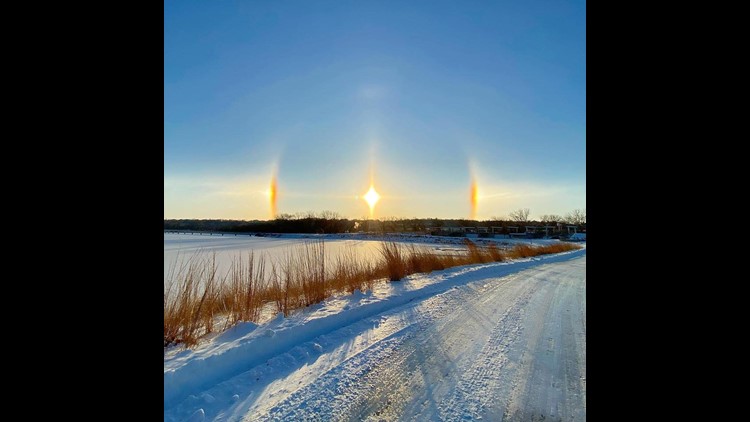For most Iowans, Sunday was too brutally cold for any outdoor activities. Those who did step outside, however, were treated to a fairly rare sight.
Sundogs were spotted all across Iowa early Sunday morning when temperatures were subzero. Wind chills fell to the -10s and -20s.
Meteorologists with the National Weather Service explain a sundog as a colored spot of light that develops as a result of refraction of light through ice crystals.
- The National Weather Service defines refraction as “the change in direction of a wave (in this case light) due to a change in its speed. This is most commonly observed when a wave passes from one medium to another at any angle other than 90° or 0°.”
The sundogs are typically located about 22° on either side (or both) from the sun. This is dependent on where the ice crystals are present.
The colors most often appear red closest to the sun. Typically they have a blue color on the outside of the sundog.
Sometimes, sundogs are referred to as mock suns or parhelia, which means “with the sun”.
Sundogs differ slightly from other phenomena like sun pillars or sun halos.
Download the We Are Iowa app in the App Store or Google Play Store



